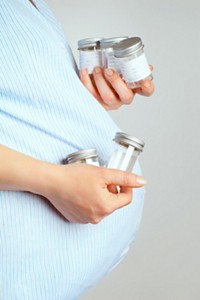Advertisement
Grab your lab coat. Let's get started
Welcome!
Welcome!
Create an account below to get 6 C&EN articles per month, receive newsletters and more - all free.
It seems this is your first time logging in online. Please enter the following information to continue.
As an ACS member you automatically get access to this site. All we need is few more details to create your reading experience.
Not you? Sign in with a different account.
Not you? Sign in with a different account.
ERROR 1
ERROR 1
ERROR 2
ERROR 2
ERROR 2
ERROR 2
ERROR 2
Password and Confirm password must match.
If you have an ACS member number, please enter it here so we can link this account to your membership. (optional)
ERROR 2
ACS values your privacy. By submitting your information, you are gaining access to C&EN and subscribing to our weekly newsletter. We use the information you provide to make your reading experience better, and we will never sell your data to third party members.
Biological Chemistry
Urine Test Could Diagnose Hard-To-Spot Infertility In Men
Medical Diagnostics: Levels of five metabolites in urine can distinguish infertile men with normal-looking semen from the more fecund
by Erika Gebel Berg
May 27, 2014

For some men who struggle with fertility issues, doctors have a frustrating lack of answers. These men’s sperm cells pass all the standard medical tests for fertility, however they are infertile—a condition called normozoospermic infertility. Now, researchers report that the levels of five small molecules in urine can discriminate between fertile men and those with this condition (J. Proteome Res. 2014, DOI: 10.1021/pr5003142). The molecular signature could be used to develop an alternative fertility screen, as well as help doctors better understand the mechanism of this kind of infertility.
Men are responsible for about 60% of the cases of infertility among couples. For men with normozoospermic infertility, there are no clear clinical indicators, such as low sperm count or poor sperm motility. So Francis L. Martin of Lancaster University, in the U.K., and Heqing Shen of the Chinese Academy of Sciences wanted to develop a simple means to diagnose this form of infertility by looking for biomarkers in patients’ urine.
The researchers collected urine samples from 47 fertile men and 71 infertile men whose semen quality was indistinguishable according to the standard tests. The team analyzed the urine samples with mass spectrometry and picked out those chemicals that had significantly different concentrations between the two groups of men, identifying 37 potential biomarkers. Next, they narrowed the field to only those biomarkers best able to distinguish the two groups according to a statistical model. The analysis pointed to five chemicals: leukotriene E4, 3-hydroxypalmitoylcarnitine, aspartate, xanthosine, and methoxytryptophan. The relative concentrations of these five in a urine sample allowed the researchers to correctly identify 86% of the infertile men and 87% of the fertile men. “That is quite high,” Martin says, as standard fertility tests may capture only 75% of cases.
The biomarkers suggested physiological problems that may contribute to normozoospermic infertility, including dysfunctional energy production and oxidative stress in sperm-producing tissues. For example, making sperm is an energy-intensive process for the body, so any hiccup in a cell’s energy-generating pathways could disrupt proper sperm production. Meanwhile, lifestyle factors such as poor diet and lack of exercise could increase oxidative stress in testicular tissues, causing damage to sperm that is not apparent in standard diagnostic tests, Martin says.
“This is a patient group for which we don’t have much of a way to tell that they’re infertile,” so there is a huge need for new fertility tests, says Dolores J. Lamb of the Baylor College of Medicine. While the results are promising, this is only the first step, she says, as larger studies are needed to confirm the findings. Martin agrees, saying they’re currently working on a study with more participants




Join the conversation
Contact the reporter
Submit a Letter to the Editor for publication
Engage with us on Twitter